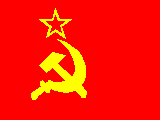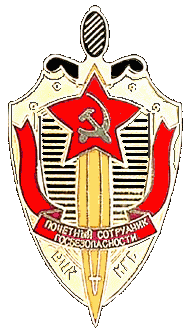





 Functions and Internal Organization
Functions and Internal OrganizationAs a state committee with ministerial status, the KGB operated on the basis of a statute (polozhenie), confirmed by the Council of Ministers, that set forth in legal terms the KGB's powers and duties. Unlike the majority of statutes governing ministerial agencies, the KGB's statute was not published. Nevertheless, Soviet textbooks on administrative law offered useful statements about the KGB's role and functions. The KGB's tasks were generally defined in official Soviet publications as encompassing four areas: the struggle against foreign spies and agents, the exposure and investigation of political and economic crimes by citizens, the protection of state borders, and the protection of state secrets. In addition, the KGB was charged with a wide range of preventive tasks, which were designed to eliminate the causes of both political and ordinary crimes. In other words, the KGB was tasked with ferreting out potential threats to the state and preventing the development of unorthodox political and social attitudes among the population.
Western estimates of KGB manpower have ranged from 490,000 in 1973 to 700,000 in 1986. There are no published estimates of the KGB budget. Many KGB personnel were institutions to which they were assigned, and the KGB received support and services from the military and other institutions, rendering a meaningful budgetary accounting particularly problematic.
Official Soviet sources did not discuss the internal structure of the KGB in detail. Nevertheless, some information on KGB organization and functions has been revealed by Soviet defectors and other sources. In 1988 the KGB had five chief directorates and three known (possible another) directorates that were smaller in size and scope than the chief directorates, as well as various other administrative and technical support departments.
The First Chief Directorate (Foreign Operations) was responsible for all foreign operations and intelligence-gathering activities. It was divided into both functional services--training and management of covert agents, intelligence analysis, and collection of political, scientific, and technological intelligence--and geographic departments for different areas of the world. The Directorage included a spetsnaz group formed in August 1981 to conduct external reconnaissance, sabotage, training and security missions, though in practice the unit was particularly active in internal-security actions.
The Second Chief Directorate was responsible for internal political control of Soviet citizens and foreigners residing within the Soviet Union, including both diplomats and tourists.
The Third Chief Directorate [Armed Forces ]dealt with military counterintelligence and political surveillance of the Soviet armed forces. The Armed Forces Directorate was divided into twelve major departments that oversaw all the various military and paramilitary formations of the Soviet government. Officers from the Directorate were stationed at every echelon of Soviet armed forces down to the company level, in each military district, with every naval group, at each military front. These KGB officers reported through their own chain of command to KGB headquarters.
The Fifth Chief Directorate also dealt with internal security. Created in 1969 late 1960s to combat political dissent, it took up some of the tasks previously handled by the Second Chief Directorate. The Fifth Chief Directorate had special operational departments for religious dissent, national minorities, the intelligentsia and the artistic community, and censorship of literature.
The Seventh Directorate (Surveillance) handled surveillance, providing personnel and technical equipment to follow and monitor the activities of both foreigners and suspect Soviet citizens. Much of this work was centered in the Moscow and Leningrad areas, where tourists, diplomats, foreign students, and members of the Soviet intelligentsia were concentrated. The Al'fa (Alpha) counterterrorist group was subordinated to Seventh Main Directorate. Alpha was involved in many counterterrorist and internal-security missions since its formation in 1974 and was heavily active in special-operations tasks in Afghanistan. The Eighth Chief Directorate was responsible for the highly sensitive area of communications. The Communications Directorate was tasked with monitoring foreign communications. The Directorate was also responsible for the cryptological systems used by KGB divisions, the transmission of communications to KGB stations overseas, and the development of secure communication equipment. The Ninth Directorate [Guards Directorate] provided bodyguards for principal Party leaders and their families, and the Kremlin and other major government facilities around the Soviet Union.The Sixteenth Directorate [former State Communications Department] maintained the telephone and radio systems used by all Soviet government agencies.
The Border Troops Directorate protected Soviet land and sea borders.
In addition to the various directorates and a special network of training and education establishments, the KGB included a variety of other organizations: a personnel department, a secretariat, a technical support staff, a finance department, an archives, an administration department, and a party committee. Most of these bodies had counterparts within the different directorates. Party committees, which existed in every Soviet organization, handled political indoctrination of personnel. Heads of party committees arranged regular meetings to discuss party matters and served as liaisons between the party and the KGB at various levels, although party membership was probably universal among KGB employees. At the republic level, KGB organization was probably similar to that of the central KGB, although republic KGBs did not supervise units of the Border Troops, which were administered centrally. Nor did they include functions of the Third Chief Directorate, which was organized primarily along military service lines or by military district. In addition, functions such as communications and foreign espionage may have been administered only in Moscow.
